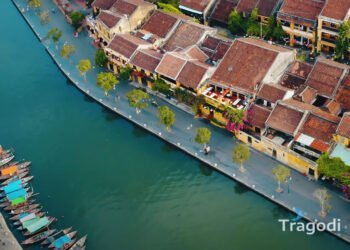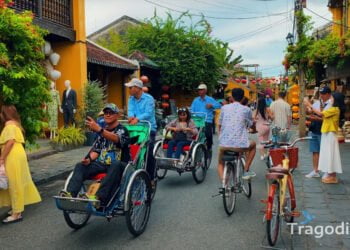
The Chinese Assembly Halls, also known as the Ngu Bang assembly hall, was built in 1741 by Chinese merchants from 5 provinces: Fujian, Chaozhou, Guangdong, Hainan, Gia Ung. The assembly hall is a place for Chinese merchants to gather for cultural and spiritual activities, as well as a place to worship Thien Hau Thanh Mau – the sea goddess revered and worshiped by the Chinese.
The assembly hall has a unique and elaborate architecture, blending Chinese and Vietnamese styles. The assembly hall consists of the main gate, front yard, front hall, main hall, rear hall, and two East-West houses. The main gate has three doors, on top of which hangs a board inscribed with the words “Chinese Assembly Halls” in Chinese characters. The front hall is where the sea gods and the ancestors of the assembly hall are worshiped. The main hall is where Thien Hau Thanh Mau and other gods are worshiped. The rear hall is where Chinese merchants meet and exchange business experiences. The two East-West houses are the living and activity places of the assembly hall members.
The assembly hall also has many beautiful and delicate decorative details, mainly made of wood and stone. The wooden frames are carved with patterns and images according to Chinese folk legends, such as Long Quy, Phoenix, White Tiger, Zhu Que… The walls are brick-laid and painted red, symbolizing luck and prosperity. The roofs are tiled and have a curved shape, creating a charming and majestic look.
The Chinese Assembly Halls is not only a beautiful architectural work, but also a valuable cultural heritage of the Chinese in Hoi An The assembly hall has witnessed many ups and downs of Hoi An’s history, as well as a place to preserve and promote the cultural values, beliefs, customs of the Chinese through many generations. Visiting the Chinese Assembly Halls, tourists will have the opportunity to learn more about the life and activities of the Chinese community in Hoi An, as well as feel the harmony and diversity of Hoi An culture.










